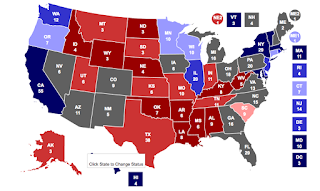Here are my notes for the debate: Consistent evidence is found for the generalization that there are no learning benefits to be gained from employing any specific medium to deliver instruction
Most current summaries and meta-analyses of media comparison studies clearly suggest that media do not influence learning under any conditions (Schramm 1977)
Basically, the choice of vehicle might influence the cost or extent of distributing instruction, but only the content of the vehicle can influence achievement. (Schramm 1977)
Media as simple vehicles for instructional methods, such as text organization, size of step in programming, cueing, repeated exposures, and prompting. (Lumsdaine 1963)
Media are mere conveyances for treatments being examined and are not the focus of study
(Salomon and Clark 1977)
Most media comparison studies to that date had been fruitless and suggested that learning objectives can be attained through “instruction presented by any of a variety of different media”
(Levie and Dickie 1973)
Media comparison studies, regardless of the media employed, tend to result in “no significant difference” conclusions (Mielke 1968)
Causal connections between media and achievement are confounded.
Only .2 standard deviations differences in the final exam scores of audio tutorial and conventional treatments. This difference was equivalent to approximately 1.6 points on a 100 point final exam. This small effect is not instructionally significant and could easily be due to confounding. (J. Kulik, Kulik, and Cohen 1979)
We have reason to believe that the lack of difference is due to greater control of nonmedium variables.
The weak but positive finding for college use of computers over conventional media is due to systematic but uncontrolled differences in content and/or method, contributed unintentionally by different teachers or designers (C. Kulik, Kulik, and Cohen 1980)
There is evidence in these meta-analyses that it tis the method of instruction that leads more directly and powerfully to learning. It seems not to be media but variables such as instructional methods that foster learning (Glaster 1976)
Novelty effect, these gains tend to diminish as students become more familiar with the new medium. An average effect size of .32 for computer courses tended to dissipate significantly in longer duration studies. In studies lasting 4 weeks or less, computer effects were .56 standard deviations. This reduced to .3 in studies lasting 5 to 8 weeks and further reduced to the familiar .2 effect after 8 weeks of data collection. .2 is weak and accounts for less than 1% of variance (Cohen 1977)
Computers are less novel experiences for college subjects than for secondary students.
Five decades of research suggest that there are no learning benefits to be gained from employing different media in instruction, regardless of their obviously attractive features or advertised superiority...clearly indicate no significant differences
Studies comparing the relative achievement advantages on one medium over another will inevitably confound medium with method of instruction.
Media are delivery vehicles for instruction and do not directly influence learning. Certain elements (like zooming in) might serve as sufficient conditions to facilitate the learning of students the skill being modeled.
We will not find learning differences that can be unambiguously attributed to any medium of instruction
My favorite line is the last one...It seems reasonable to recommend, therefore, that researchers refrain from producing additional studies exploring the relationship between media and learning unless a novel theory is suggested.
Overall the article basically says there is no connection between media and learning. The one issue with the studies are is that they are old, none of the studies are recent, and by recent I mean in the past 30 years. Yes, 30 years, so I am bit skeptical about the salience of this article.
